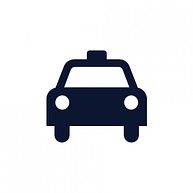
-
![phone icon]() Provided by: Jardson Almeida
Provided by: Jardson Almeida

Our travel guides are free to read and explore online. If you want to get your own copy, the full travel guide for this destination is available to you offline* to bring along anywhere or print for your trip.
*this will be downloaded as a PDF.Price
€4,95
Phone Calls
The guide was updated:+57 is Colombia's country code, 5 is the area code for Cartagena. +57 5 will then normally be followed by a 7-digit local phone number
Useful Information
Digital Travel Guide Download
Our travel guides are free to read and explore online. If you want to get your own copy, the full travel guide for this destination is available to you offline* to bring along anywhere or print for your trip.
*this will be downloaded as a PDF.Price
€4,95

Citizens of the European Union, most countries in the Americas, Australia & Oceania, as well as several Asian countries such as South Korea and Japan do not require a visa for stays of up to 90 days. In cases when an entry visa is required, the application can often be done online.
Nationals of Cuba and and those holding passports issued by Palestine will need to apply for a visa, even if they will be entering Colombia for transit purposes only.
Read more

Best Time to Visit Cartagena
The best time to visit Cartagena is early in the year, between January and March. This period is characterised by favourable weather and doesn't get too humid, which is perfect for both city exploration and nearby island-hopping. Streets begin to feel emptier as vacationer waves of December and early January subside, giving way to more manageable prices and attractions that are no longer swarmed with visitors. Another bonus of traveling during this period is the possibility to hit several important festivals: Storyland (dedicated to electronic music) and Hay Festival (revolving around all things cultural exchange) both take place in January, while Festival del Dulce — a celebration of sweets from all across the Caribbean — is a glorious Easter tradition worth making time for.
Read more

Rafael Núñez Airport (CTG)
The largest air hub on Colombia's Caribbean coast serves multiple destinations within the country, as well as several major international ones such as New York, Miami, Fort Lauderdale, and Panama City.
The trip to central Cartagena usually takes no longer than 20 minutes. Taxis are always available; these operate on fixed fares rather than meters — get a voucher from the official taxi stand at the airport with an exact price quote to your destination to avoid being overcharged.
Public transport is available as well: one option would be catching a colectivo off the side of the road by the airport, another — taking a Metrocar shuttle (these run at 10-minute intervals and stop at the La India Catalina monument, just outside the old town).
Bookable
Read more

Public Transport
Private buses circulate around Cartagena, each one's main stops indicated in the front window. Fares are very inexpensive, and the buses can be flagged down off the side of the road.
Inside the old town, most locations are easy to reach on foot.
Read more

Taxi
Taxis are relatively inexpensive, but make sure to be clear on the exact fare prior to boarding, as local taxis do not use meters. When getting a cab, opt for calling an operator and ordering one rather than just getting into one in the street, as this puts you at a higher risk of being overcharged.
Ridesharing apps such as Uber are also in use and may even be the preferred option for travelling locally, as fares will be determined automatically prior to boarding and charged directly to your credit card.
Read more

Medical Care
Medical care is generally of very high quality in Colombia, making medical tourism from nearby countries increasingly popular.
If you happen to require medical attention while in Cartagena, refer to one of the city's private hospitals: Hospital Naval is one of the most reputable.
Pharmacies/drug stores are readily available throughout Cartagena, including ones that operate 24/7. In some cases, medication that requires a prescription to be purchased in countries like the USA is sold over the counter at significantly lower prices, leading travellers to stock up on their supplies prior to returning home.
Read more

Is Cartagena Safe?
Cartagena, Colombia is generally a very safe place to visit, with most trips being completely trouble-free. It may be a good idea, however, to take certain safety precautions, such as keeping an eye on your belongings at all times, as petty theft and pick-pocketing do occur in touristy areas.
There are certain neighbourhoods outside the city centre that are best avoided if you're travelling alone or aren't accompanied by a local guide. As a general rule, neighbourhoods removed furthest from the historic centre will be the ones posing most risk. While the Old Town, Getsemani, San Diego and Bocagrande are very safe, areas like Centro and La Popa are best reserved for daytime trips only, and neighbourhoods further afield, such as La Magdalena, La Maria, El Paraiso, Rafel Nuñez, and Piedro de Bolivar are better off avoided entirely. Mind that even the safest areas may pose a certain threat after sundown.
Read more

Cash or Card?
While establishments across Cartagena do increasingly accept credit and debit cards for payment, many still either only do so nominally or operate on cash alone. Cash will definitely be needed for smaller purchases, especially from street vendors.
A relatively high service fee may be charged at some restaurants for card payments, so it's generally a good idea to check with the staff whether this is the case to avoid unpleasant surprises.
ATMs are widely available; withdrawal fees will likely depend on your bank and the bank that operates the ATM. When choosing an ATM, go for ones that aren't in isolated locations, and make all your withdrawals during daylight hours.
Read more

Common Scams and Annoyances
Although Cartagena is generally safe to visit, there are a few things to watch out for during your stay.
People posing as police officers and asking to inspect your documents and money, supposedly to ensure their authenticity, are one common way of catching unsuspecting tourists off guard. If this happens to you, demand to be taken to the nearest police station, at which point the scammers will likely be spooked off.
Street salespeople will often approach cafe and restaurant customers, both at outdoor terraces and even in indoor seating areas. The best course of action would be to thank them and carry on with your meal.
When getting a cab, call an official company and order a taxi that'll arrive and pick you up, rather than just getting into the nearest one. Alternatively, use ride sharing apps like Uber that pre-calculate the total cost of the ride in advance. That way, you'll avoid being overcharged.
Do not leave your drinks unattended and don't accept drinks or cigarettes from strangers.
When ordering drinks, chose ones with no ice in them, or request to leave the ice out.
Carry a photocopy of your passport, along with the page containing your entry stamp, along with you at all times.
Never leave the hotel carrying all your money and valuables — have most of it stowed away in a secure location while you're out exploring.
Read more

Drugs in Cartagena
It's possible that you'll be approached by people selling drugs in the street, at bars or nightclubs — be sure to politely refuse all such offers, and never consume or carry drugs on your person, as this is both illegal and can be a set up for yet another elaborate scam. The "dealers" may even be acting in cahoots with the police, who are known to have been waiting to apprehend and search tourists immediately after the "transaction" takes place. In other cases, the "police" may even simply turn out to be the dealer's accomplices in disguise.
Apart from marijuana and cocaine, another drug that's gained notoriety in recent years is 'ayaguasca'. Traditionally used by indigenous peoples of the Amazon as part of rituals, it is a potent hallucinogen whose consumption side effects may, in some cases, lead to a lethal outcome. There have also been reports of those attempting to cross borders carrying the drug being apprehended and given hefty prison sentences.
Read more

Postal Services
The main public post carrier in Colombia is the "4-72"; the office closest to you may be located on their website. It is important to note, however, that 4-72 is notoriously unreliable, and anything more valuable than a simple postcard is best sent via a private carrier, such as DHL. 4-72 has a reported success rate of somewhere between 70 and 50 percent, meaning that up to half of all mail sent through them is gone without a trace and never arrives at the intended addressee.
It is also quite pricey to send mail abroad, especially if you choose to go for the "correo certificado" options, which allows one to track each mailing's location. To send with "certificado", you'll need to arrive at a physical office in person and present your official ID/passport number.
In Cartagena, the easiest solution for sending minor mail abroad may be via a tourist shop, some of which may sell stamps and even have an on-site mail box; post boxes in the street are hard to come by.
Read more

Cartagena de Indias Cruise Port
Cartagena is a common day-stop for cruises whose routes lie through the Caribbean. The cruise port of Cartagena, Colombia, is located roughly 4km from the Old Town, where the majority of Cartagena's attractions lie.
To reach the city center, one will either need to take a short walk from the pier to the Cruise Ship Terminal, or take a free shuttle bus. From the terminal building, the options are to either join a shore excursion or arrange your own transfer. Taxi drivers will be waiting at the port and outside the port exit; those who choose to walk a little further can expect to pay two times less than those who choose to get a cab directly from the port (which will still likely be twice as expensive as getting a cab back from the Old Town to the port). It may be worth checking whether any cars are available via apps such as Uber.
The Cartagena de Indias Cruise Port is pleasant enough, and has been named best in the Caribbean on several occasions. The port is equipped with souvenir stores for last-minute shopping and a Juan Valdez Cafe Cafe outlet. It is best, however, to make any purchases elsewhere, as things at the port tend to be overpriced.
Although Colombia's official currency is the peso, US dollars are widely accepted throughout Cartagena. It is advisable to have some cash on hand for smaller purchases; there is a functioning ATM at the port.
The cruise port's absolute highlight is a miniature outdoor zoo, which contains a selection of animals ranging from macaw to flamingos.
Read more

Phone Calls
+57 is Colombia's country code, 5 is the area code for Cartagena. +57 5 will then normally be followed by a 7-digit local phone number
Read more

Power Plugs, Sockets and Voltage in Cartagena, Colombia
Power plug types A and B are used in Colombia (these are plugs with two parallel flat pins, common throughout North America).
Voltage 110 V; frequency is 60 Hz. If the standard voltage in your country is between 110 and 127 V, you will NOT require a voltage converter.
Read more


